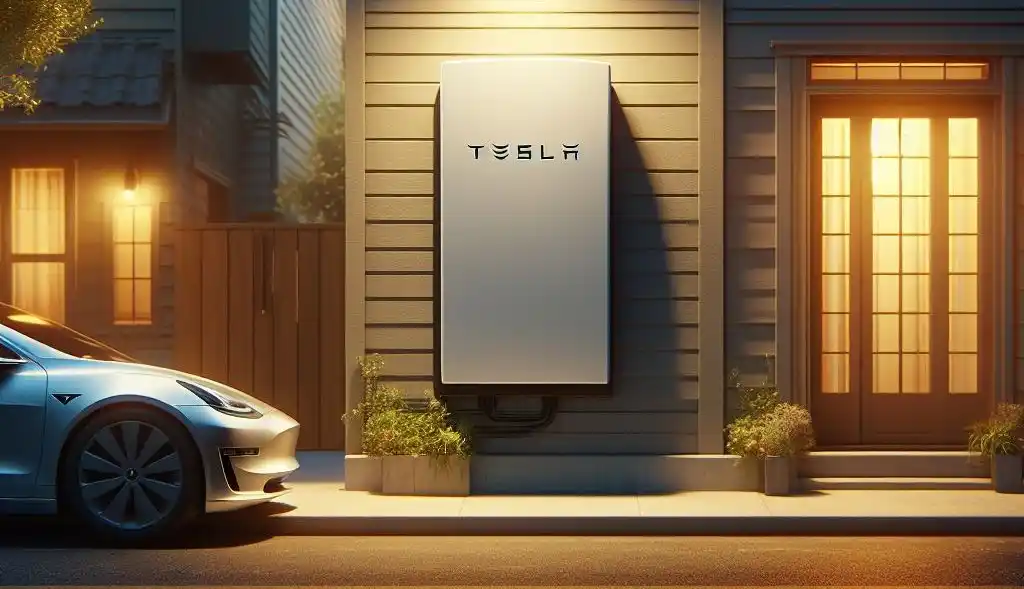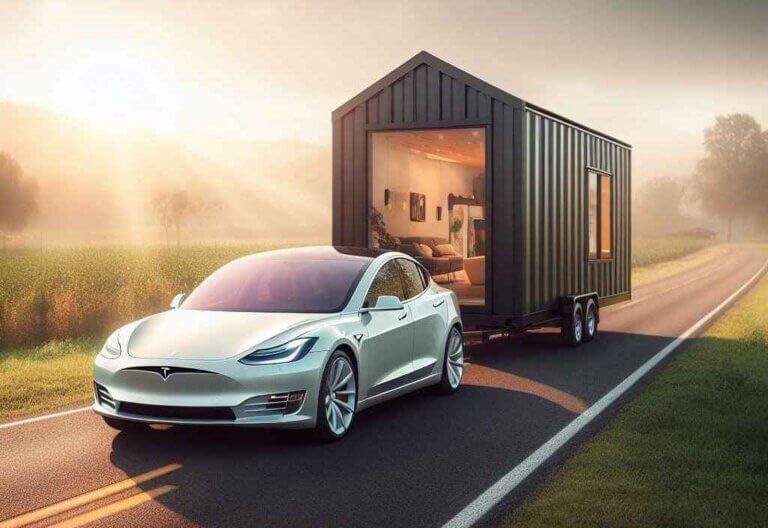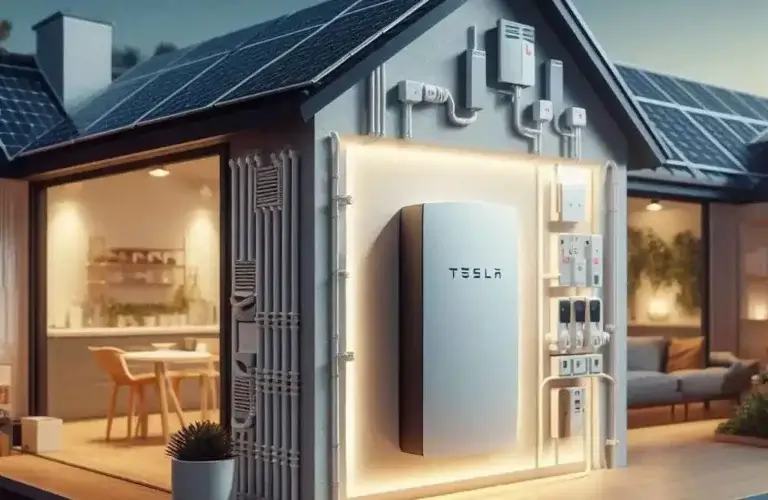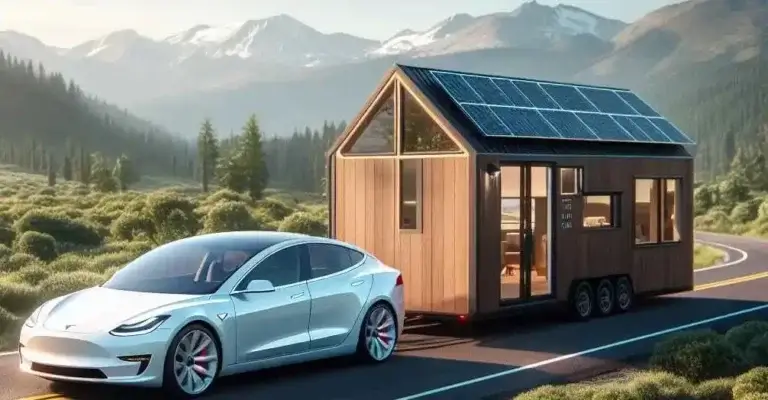How Many Solar Panels to Charge a Tesla Powerwall 2?
Are you considering installing a Tesla Powerwall 2 home battery and wondering how many solar panels you’ll need to keep it charged? This is an important question to answer before investing in energy storage.
In this comprehensive guide, we’ll cover everything you need to know about how many solar panels to charge a Tesla Powerwall 2, including:
- An introduction to the Tesla Powerwall 2 system
- Benefits of pairing solar panels with a Powerwall battery
- Calculating how many solar panels you need for a Powerwall
- Factors that impact the number of solar panels required
- Example solar panel and Powerwall system sizes
- Frequently asked questions
So if you want to gain a deeper understanding of how to properly size a solar array to charge your Powerwall 2 battery, then read on!
Table of Contents
What is the Tesla Powerwall 2?
The Tesla Powerwall 2 is a rechargeable lithium-ion battery system designed for residential energy storage. It has a storage capacity of 13.5 kilowatt-hours (kWh) making it powerful enough to power most homes during an outage.
The Powerwall works by storing excess solar energy generated during the day. It can then discharge this electricity to power your home when solar panels aren’t producing, like at night. This gives homeowners energy independence and backup power.
Key features and specs of the Tesla Powerwall 2 include:
- Storage: 13.5 kWh capacity
- Efficiency: 90% roundtrip efficiency
- Power: 7 kW peak / 5 kW continuous power
- Voltage: 350 – 450 volts
- Warranty: 10-year warranty
- Dimensions: 45.3 in x 29.2 in x 5.8 in
Now let’s look at why pairing solar panels with a Powerwall battery system makes sense…
Benefits of Using Solar Panels with a Tesla Powerwall
Installing solar panels on your roof provides renewable energy to power your home during daylight hours. But what about at night or when the weather isn’t sunny? This is where systems like the Tesla Powerwall come in.
Here are some of the biggest advantages of combining solar panels with a Powerwall 2 battery:
- Maximize solar self-consumption – The Powerwall lets you store excess solar generation during the day for use at night. This increases a home’s solar usage and independence.
- Electricity cost savings – By using self-generated solar power around the clock, reliance on utility electricity is reduced.
- Clean backup power – The Powerwall keeps your home powered during grid outages for reliable backup electricity.
- Increased solar production – More solar panels can be added when a battery stores excess daylight production.
- Demand charge reduction – The Powerwall helps curb high energy usage peak times to minimize costs.
There are lots of excellent benefits to installing a home solar and battery storage system. But how many solar panels do you need to keep a Powerwall 2 fully charged? Let’s dig into the specifics…
How Many Solar Panels to Charge a Tesla Powerwall 2?

So how many solar panels are needed to charge a 13.5 kWh Tesla Powerwall 2 home battery system? The short answer is between 17 to 66 solar panels are typically needed to fully charge a Powerwall 2 battery from sunlight each day.
However, the exact number of solar panels required depends on several important factors:
- Your home’s energy usage
- Powerwall energy allocation
- Average sun hours in your location
- Solar panel system size
- Panel wattage and efficiency
Next, we’ll cover each of these variables in detail and provide an equation for calculating the ideal number of solar panels to charge your Tesla Powerwall 2 system.
Home Energy Usage
When determining how many panels you need for a Powerwall 2 installation, the starting point is assessing your home’s daily energy consumption.
How many kWh does your household use per 24-hour period? Checking your monthly electricity bills can provide this usage data.
For example, if your average home currently utilizes 30 kWh of grid electricity per day then in an ideal scenario your solar panel system would need to generate 30 kWh per day to completely offset this.
However, besides just powering your home you also need to set aside a portion of this solar energy to charge the Tesla Powerwall battery itself each sunny day.
Powerwall Energy Allocation
To calculate solar panel requirements for your battery system, you first need to determine how much solar energy you’ll allocate to charging your Powerwall 2 unit.
The Tesla Powerwall has a 13.5 kWh energy capacity. But the best practice is to set aside 50-100% more solar production than this capacity to account for system inefficiency and days with less sunlight.
For instance, an oversized 18 kWh solar energy allotment for charging a 13.5 kWh Powerwall 2 provides a comfortable buffer for these factors.
So in our previous 30 kWh daily usage example, assume 18 kWh will go towards charging battery storage plus 12 kWh towards directly powering the home.
Sun Hours at Your Site
The key specification you need to understand next when calculating the number of solar panels needed to charge a Powerwall 2 unit is something called sun hours.
Sun hours refer to the average peak sunlight hours at your location daily.
For example, Phoenix, Arizona which has very good solar resources averages 6 sun hours per day annually. Meanwhile, Seattle, Washington averages closer to 3 daily sun hours over a year.
Check solar maps to determine the average daily sun hours for your area. This will strongly influence how many solar panels are required to charge your home battery system.
Solar Panel System Size
Next, when determining the solar panel system size needed for charging a Powerwall 2 battery we’ll use these previous factors assessed:
- Daily Energy Usage: 30 kWh
- Powerwall Charging Allotment: 18 kWh
- Site Sun Hours: 5 hours on average
You size the solar array by taking the combined energy usage (30 kWh) and battery charging needs (18 kWh) which sums to 48 kWh in our example.
Then divide this by the average peak sun hours for your location, which we determined is 5 sun hours.
48 kWh (daily energy usage + battery) ÷ 5 sun hours = Approximately 10 kW solar array
This means a 10 kW system size is needed on average to power the home and charge the Tesla Powerwall 2 unit given the assumptions used.
Solar Panel Wattage
Finally, once you’ve determined the proper solar array size in kW you next need to divide this system capacity by the wattage rating of the panels you plan to install.
For example, a standard solar panel wattage these days for residential systems ranges from about 325 to 400 watts.
If we assume using a typical 350-watt solar panel then the calculation would be:
10,000 Watts (10 kW system) ÷ 350 Watt Panels = 29 Solar Panels
So in our scenario with these variables, you’d need 29 solar panels rated at 350 watts each for adequate energy production to offset usage and charge a Tesla Powerwall 2 battery.
Of course, other panel wattages and sunnier/cloudier locations than our example will shift the math. But hopefully, this gives you a framework for understanding how to calculate the proper solar panel system size to keep your battery charged!
Example Solar Panel System Sizes

Let’s take a look at some more examples across varying household energy usage levels and sun hour assumptions.
Here are three different home profiles outlining the Powerwall solar panel requirements for each:
4 Person Household
- Energy Usage: 30 kWh/day
- Powerwall Charge Allocation: 15 kWh
- Site Sun Hours: 4 hours
- 350W Panels
Step 1) 30 kWh (usage) + 15 kWh (battery) = 45 kWh
Step 2) 45 kWh ÷ 4 sun hours = 11.25 kW solar array
Step 3) 11,250 Watts ÷ 350W panels = 32 panels
3 Bedroom Home
- Energy Usage: 45 kWh/day
- Powerwall Charge Allocation: 20 kWh
- Site Sun Hours: 6 hours
- 330W Panels
Step 1) 45 kWh (usage) + 20 kWh (battery) = 65 kWh
Step 2) 65 kWh ÷ 6 sun hours = 10.83 kW solar array
Step 3) 10,830 Watts ÷ 330W panels = 33 panels
2 Bedroom House
- Energy Usage: 15 kWh/day
- Powerwall Charge Allocation: 10 kWh
- Site Sun Hours: 5 hours
- 360W Panels
Step 1) 15 kWh (usage) + 10 kWh (battery) = 25 kWh
Step 2) 25 kWh ÷ 5 sun hours = 5 kW solar array
Step 3) 5,000 Watts ÷ 360W panels = 14 panels
As shown in the examples above, the specific number of solar panels needed for charging a Tesla Powerwall 2 unit can shift significantly based on site-specific usage, sun hours, and system factors.
But this gives you a standardized methodology using your unique inputs to calculate the properly sized solar array.
Key Factors Impacting Solar Panel Requirements
Beyond what we’ve covered already, there are some additional considerations when determining how many solar panels you’ll need for your battery system.
Home Energy Efficiency
Improving your home’s energy efficiency through upgrades like insulation, air sealing, and installing efficient appliances can lower the based energy usage significantly.
If your overall household consumption is lower, then the number of solar panels required to offset this demand and charge batteries is also reduced.
Every bit of energy efficiency helps maximize your use of free solar energy.
Future Electric Vehicle Charging
If you plan to charge an electric car from your solar and battery storage system then factor in these added energy demands.
Charging an EV like a Tesla generally requires lots more solar production so increase panel counts appropriately based on your driving mileage needs.
Weather and Location
As shown in the sun hour variable, your geographic location and local weather strongly influence solar panel output.
Rainy or stormy climates logically need more panels than a sunnier southern state to achieve the same daily energy production numbers.
Panel Efficiency
We based our examples on standard efficiency solar panels in the 17-19% range. However, investing in premium panels with cutting-edge 21%+ efficiency rates allows you to use fewer panels while achieving equivalent energy harvests.
Higher solar panel efficiency equals lower total system size requirements.
Direction and Tilt
Pointing panels perfectly south in the northern hemisphere and tilting them at an angle equal to your latitude maximizes production from the array.
Incorrect direction or tilt leads to underperforming solar panels requiring more panels to compensate. Proper orientation and tilt optimize harvest.
Frequently Asked Questions
Here are answers to some of the most common questions homeowners have about solar panels and charging the Tesla Powerwall 2:
How many solar panels to charge a Tesla Powerwall overnight?
Target having a solar array that generates about 50-100% more energy production than your Powerwall 2 battery capacity. So for a 13.5 kWh Powerwall, have around 18 to 27 kWh per day available from your panels to comfortably charge overnight.
Can the Tesla Powerwall charge from the grid?
Yes. The Powerwall can charge from solar panels and/or your home’s main electrical grid connection. Having both charging pathways allows maximum flexibility.
How long does it take to charge a Tesla Powerwall 2?
The 13.5 kWh Tesla Powerwall 2 battery can charge from 0 to 100% in around 5 to 8 hours with sufficient solar panel production or grid power available. Faster charges are also possible at higher input rates.
What is the cost per kWh to charge a Tesla Powerwall 2?
Assuming using energy from your owned solar panel system, the cost per kWh to charge a Powerwall battery rounds to $0.00. However, if grid charging there are slight electricity costs but still far cheaper than typical peak rates.
Can a Tesla Powerwall power a house?
Yes. The Tesla Powerwall 2 has a 5 kW continuous / 7 kW peak power output rating which is enough to power most household electrical loads and appliances in a grid failure. Runtime depends on home energy use.
How long will a Tesla Powerwall 2 power my house?
A fully charged 13.5 kWh Tesla Powerwall 2 unit can power an efficient modern 3 bedroom home using around 30 kWh per day for approximately 10 hours. Higher energy use homes may get less runtime.
Conclusion
Determining how many solar panels you need to charge a Tesla Powerwall 2 battery requires assessing your specific home energy use, Powerwall charge allocation, sun hours, panel wattage, and other variables.
As our examples demonstrated, the ideal solar array size to keep a 13.5 kWh Powerwall 2 charged daily can range significantly across different site scenarios. Typical installs use between 17 to 66 panels depending on these factors.
But by following the calculation methodology outlined and having a firm handle on your household power demands, local solar resources, and planned battery usage you can properly right-size a system to maximize savings.
A solar and energy storage system featuring a Tesla Powerwall 2 home battery provides households with awesome benefits. We hope this deep dive into solar panel requirements provides the info needed as you evaluate an investment into renewable energy!







